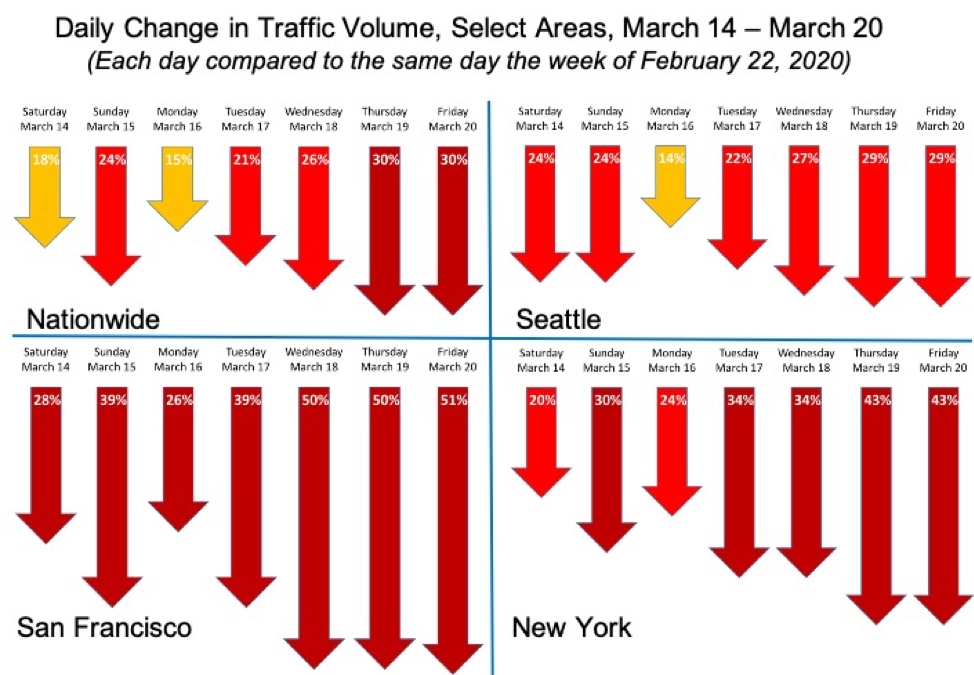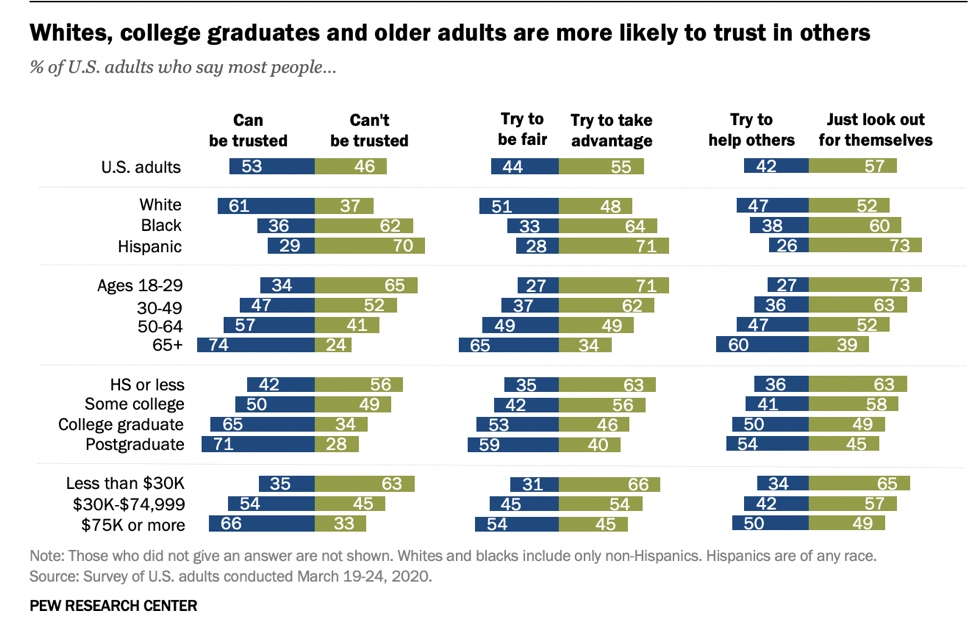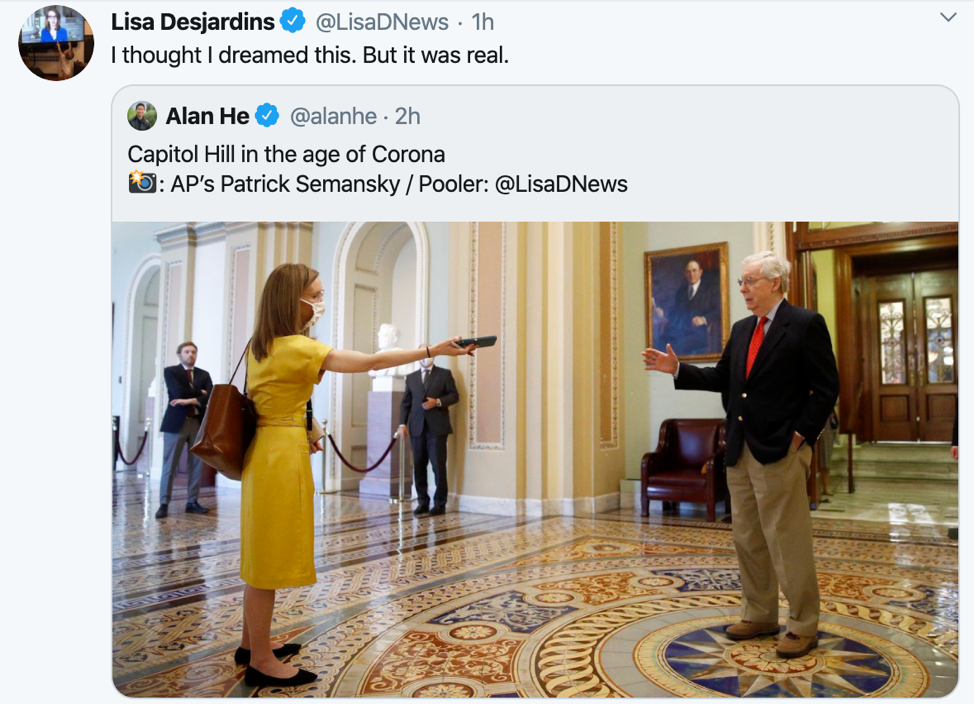 Covering COVID-19 is a daily Poynter briefing about journalism and coronavirus, written by senior faculty Al Tompkins. Sign up here to have it delivered to your inbox every weekday morning.
Covering COVID-19 is a daily Poynter briefing about journalism and coronavirus, written by senior faculty Al Tompkins. Sign up here to have it delivered to your inbox every weekday morning.
We’ll never shake hands again? Oh, come on. Do you believe that?
Dr. Anthony Fauci said he was “somewhat serious” when he said “we may never shake hands again” last week in a Wall Street Journal podcast. He also said it would likely never happen that we would quit shaking hands.
Which made me wonder: Why do we shake hands at all? And how did we decide that shaking with the right hand was the acceptable way to shake?
There are lots of practical theories about shaking hands. For one thing, it shows that you don’t have a weapon in your hand — and moving your hands and arm up and down might shake loose a weapon if you had one hidden.
Historians say the handshake has also been useful because it conveys a lot with no words. It works across languages and cultures. History.com traced the history of handshakes:
One of the earliest depictions of a handshake is found in a ninth century B.C. relief, which shows the Assyrian King Shalmaneser III pressing the flesh with a Babylonian ruler to seal an alliance. The epic poet Homer described handshakes several times in his “Iliad” and “Odyssey,” most often in relation to pledges and displays of trust. The gesture was also a recurring motif in the fourth and fifth century B.C. Greek funerary art. Gravestones would often depict the deceased person shaking hands with a member of their family, signifying either a final farewell or the eternal bond between the living and the dead. In ancient Rome, meanwhile, the handshake was often used as a symbol of friendship and loyalty. Pairs of clasped hands even appeared on Roman coins.
Shaking hands is also a signal that the parties involved are equals, rather than bowing or curtseying which sends the signal of subservience.
Some historians point to the Quakers in the 1600s as the ones who popularized handshaking rather than bowing as a greeting. Quakers tried to simplify life and equalize society.
A hundred years ago, as women were being encouraged to shake hands with men, but not too freely, etiquette books dispatched advice that generally tracked along the lines of the 1989 book “Manners and Rules of Good Society,” which advised:
“It depends upon whom a lady is introduced to, or upon who is introduced to her, whether she should or should not shake hands. She should not shake hands on being casually introduced to a person altogether a stranger to her.”
But why do we use the right hand?
The best guess seems to be because most people are right-handed, so if you did have a weapon, it would probably be in your right hand.
But, and here is a connection to COVID-19 (sort of), there is a hygienic reason as well. In some cultures, people wipe their behinds with their left hand. So, shaking with your right hand offers the cleanest option.
Do you know where that hand has been?
OK, so here is why Dr. Fauci may be concerned about handshaking. It turns out that after we shake hands with people, we tend to fairly quickly put our hands to our faces. Look at this undercover video from the Weizmann Institute of Science (in Israel). The experiment recorded 153 people who, strangely, touched their hands to their noses right after shaking hands with a stranger.
The scientists think it has something to do with “chemosignalling,” or signaling via scent. The project’s researcher told New Scientist, “People constantly have a hand at their face, they are sniffing it, and they modify that behavior after shaking hands.”
Do we really need toilet paper? Bidet sales explode
As long as we are at it, we might as well take on the issue of why we use toilet paper at all. And, it seems, lots of people are asking that question. Bidet sales are off the charts.
Wired reported one bidet company’s sales expanded tenfold:
“Tushy’s sales over the past few weeks have grown from double to triple to more like 10 times what they were in weeks before word spread about TP shortages,” Jason Ojalvo, CEO of bidet startup Tushy, says. “This could be the tipping point that finally gets Americans to adopt the bidet.”
While looking into this spike in sales I noticed that bidet company websites looked a lot like this. Totally sold out.
But don’t freak out. Home Depot and lots of other places seem to have plenty to choose from.
When I taught in Japan last year I was surprised by the prevalence of high-tech toilets. A fair number of people around the world wash rather than wipe. Given our recent trauma of running out of toilet paper, one would have to wonder whether we will migrate toward the bidet method so as not to be held hostage by consumer whims in times of panic.
Scientific American studied this notion of going paperless and did some math:
Justin Thomas, editor of the website metaefficient.com, considers bidets to be “a key green technology” because they eliminate the use of toilet paper. According to his analysis, Americans use 36.5 billion rolls of toilet paper every year, representing the pulping of some 15 million trees. Says Thomas: “This also involves 473,587,500,000 gallons of water to produce the paper and 253,000 tons of chlorine for bleaching.” He adds that manufacturing requires about 17.3 terawatts of electricity annually and that significant amounts of energy and materials are used in packaging and in transportation to retail outlets.
But wait, isn’t using water instead of paper just using up more water? How is that “green?” Scientific American looked into that, too:
Biolife Technologies, manufacturer of the high-end line of Coco bidets, says the amount of water used by a typical bidet is about 1/8th of a gallon, with the average toilet using about four gallons per flush. Lloyd Alter of the website treehugger.com reports that making a single roll of toilet paper requires 37 gallons of water, 1.3 kilowatt/hours (KWh) of electricity and some 1.5 pounds of wood.
Car insurance rebates and breaks
If there is any sort of slight silver lining to the COVID-19 pandemic it could be that your car insurance may give you some money back. State Farm, the nation’s biggest insurer, is giving $2 billion back to policyholders because, it turns out, when we all drive less, we crash less and don’t claim as many damages. State Farm says you won’t get a check, but you will get a credit on your next statement that amounts to about 25% of your premium for the time period of March 20 through May 31.
Allstate and Geico announced rebates of up to 15% on insurance premiums. USAA told policyholders that auto insurance members with policies in effect as of March 31 will receive a 20% credit on two months of premiums, which amounts to more than a half-billion dollars in rebates.
Because fewer accidents are happening, the insurance industry as a whole could end up saving $100 billion from claims that won’t need to be paid, says Dan Karr, founder and CEO of ValChoice, a service that rates insurance companies.
Inrix, a traffic data provider, produces weekly graphics showing how much traffic goes up or down. Look at these charts. It is no wonder traffic crashes are down by a lot:
Interesting that long haul truck traffic is flat, which is a sign that the supply chain is holding steady.
Study: We trust each other more, but don’t trust each other much
A new study by the Pew Research Center shows that amid the COVID-19 crisis, Americans generally have a more favorable view of each other. We trust each other more than we did two years ago. But, here is the interesting part: The majority of us don’t trust each other much.
Pew reported the sad numbers it found:
In 2018, 37% of Americans believed that most of the time people will try to help others. The new survey shows that share has increased to 42%.
A majority (57%) still believes most of the time people would just look out for themselves, but that is a slight drop from 62% who agreed with that statement in the 2018 poll.
The way we work now
We’ll be back tomorrow with a new edition of Covering COVID-19. Sign up here to get it delivered right to your inbox.
Al Tompkins is senior faculty at Poynter. He can be reached at atompkins@poynter.org or on Twitter, @atompkins.












